Tourism Lifecycle, Destination “Fit” and Cultural Devastation
There are many different types of travelers and places that they feel they fit in. One may find a place too touristy, while another wonders where the other people are. Some are happy sleeping on the beach and taking cold showers, others require nothing but the finest thread counts and butler service.
How do you find out where you fit in?
Understand that for smaller towns there is a tourism lifecycle - and it will shape the locals’ perception of you, what types of other travelers you’ll encounter, services available and how to set your expectations. I’m borrowing a framework from the Technology Lifecycle Adoption Curve, but it seems to adequately describe a vast majority of places I’ve been. You could even say there’s achasm between the “Known” and “Developed” stages (described below) when that first Sheraton or Hilton is built and the destination is opened up to the mass market.
Cities
With large cities, New York, Paris, Sydney… Tourism is but a fraction of the industries present. Most will have cordoned off a “tourist hell” that locals avoid like the plague, prices are inflated and quality slides quite a bit/chain restaurants abound, since it’s a one shot economic interaction and some cities are savvy enough to package it into a “Disneyland Effect” (more on this later)
Tourism Lifecycle (Non-city)
For non-city destinations, you can place almost all of them on this curve, marked by signposts like these:
Undiscovered
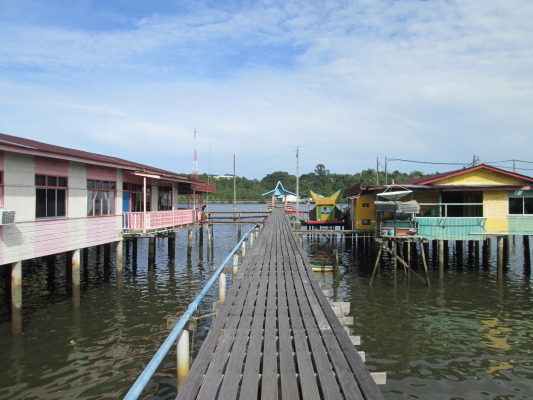
People in Brunei dont really know what to make of you when you visit. Super-friendly and I learned a lot about life in a water village.
These are places that are not at all prepared for tourism. Locals will look at you with curiosity if you look different. You may be asked to take photographs with people you meet, perhaps holding a baby from time to time (not kidding). Chances are high you’ll be invited home for tea or lunch. You are “the foreigner” and generally these experiences are tremendously rewarding and insightful snippets of genuine human interaction and cultural exchange.
However, these locations are also notoriously hard to get to, with limited flight service, onerous visa requirements and typically very little infrastructure that would please most Western travelers. Expect to pay a lot to get there, but very little once you arrive.
Destinations: Myanmar, Brunei, Kazakhstan, Mongolia, Kyrgyzstan, Papua New Guinea (obviously more in rural areas than the capital/largest cities)
Visa Situation: Generally Required Before Travel
Types of Travelers Encountered: Hardcore backpackers, people working for NGOs, Eco/Adventure/Trekking Tourists
Known, but Not Frequented

Some places have basic services and great excursions, but dont expect a hot shower or A/C
These destinations are in a great sweet spot, with the ability to access more easily with miles, slightly more familiarity arranging accommodations and transport (i.e. guesthouses and pickup truck taxi services exist). They still require some effort and generally won’t please the Westin or Hilton crowd because there may not be hot water or reliable internet, but they’re wonderful because they bring a great blend of cultural insight and interaction, a lot of flexibility with itineraries/staying/eating and won’t break the bank. Your friends will probably still ask, “where’s that?” There may even be an ATM.
Destinations: Lesser Known Thai Islands, Laos, Cambodia, Romania, Ecuador, Amed/Gili
Visa Situation: Either not required or Visa on Arrival
Types of Travelers Encountered: Backpackers, Vagabond-types, Retired Westerners (who perhaps operate a restaurant or dive shop), that French Couple who takes 4 months a year off
Developed
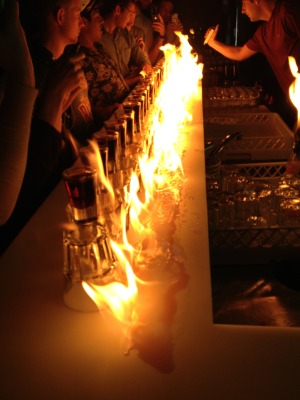
Some places have a great local flare, with minimal amounts of mass tourism. They may still even light the bar on fire for you!
Here, you’ll find some resort options and maybe even a chance to use hotel points, but generally local culture and prices are still unaffected. There is a nascent, but growing tourism industry but the destinations are pretty easy to hop into with miles, you can have a great experience, meet locals, see unique sights and eat delicious food, without too many scams or watered down experiences.
Destinations: Thailand, Croatia, Florianopolis, Portugal, Poland, Budapest, Malaysia, Cusco, Turkey
Visa Situation: Generally not required or processed on arrival
Types of Travelers Encountered: Wealthier/Adventurous Older Tourists, Backpackers, English Teachers
Overdeveloped
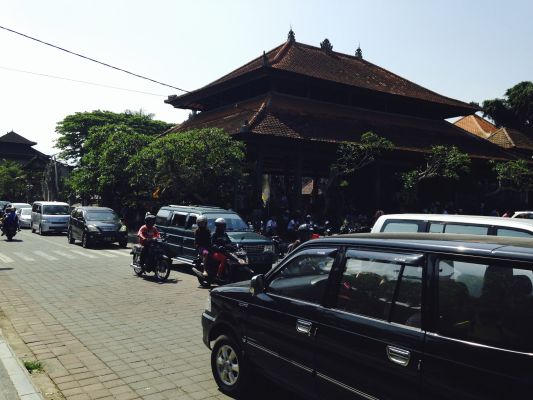
This is a pretty typical traffic jam in Ubud, in front of one of the major temples. (This is light compared to the traffic in Kuta/South Bali)
These places have economically adapted to tourism (and it’s often a huge if not the major source of income for the population). Here, you’re far more likely to experience aggressive touts or scams, prices similar to home and package deal tourists that could potentially ruin the experience for you. There is still some local culture to experience, but the sights will be costly, with long lines and food/drink will compromise on quality to maximize margin.
Destinations: Cancun, South Bali, parts of the Caribbean, Phuket, Amsterdam, Old City Prague, Waikiki, (parts of) Barcelona
Visa Situation: None or Visa on Arrival
Types of Travelers Encountered: Package Tourists, Spring Breakers, Bachelor/Bachelorette Parties, People who need all of the comforts of home, People who never leave the hotel, People with large amounts of luggage
Dead
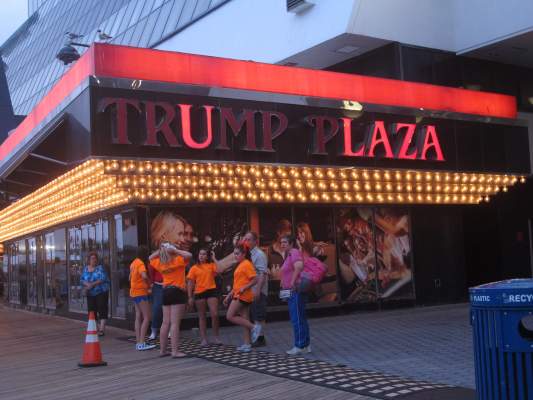
Typically, if Donald Trump has built a failed casino there, it’s probably past its prime. - Wayne Perry - Associated Press
Sadly, some locations had a heyday for travelers, but they have either become too close to home, or the attractions have lost their allure to more exotic locales. The local economy now can’t support the oversupply of hotel rooms and airline award availability is pretty easy to come by, if they still fly the routes. Consider for a budget weekend getaway, but don’t expect any life epiphanies.
Destinations: Atlantic City, Virginia Beach, South British Coast, Parts of Florida
Visa Situation: Hah!
Types of Travelers Encountered: Deep Discount Package Tours, Gamblers
Conclusion
Obviously, this compresses a lot of factors we weigh in travel down to a fairly simplistic way to describe destinations, but I hope it can help as a guide to understand particular behaviors or experiences you have while on a trip.
More broadly, I think it’s really important to think about and understand the economic impact of tourism. On the one hand, it can provide income and jobs to regions that are looking to enter a broader diversity of industries. On the other, it can cause rapid cultural change or commercialization (the “human zoo” factor) and exacerbate wealth inequalities when done wrong.
This it why it’s best to DO YOUR RESEARCH so you know what to expect and how to make the most of your trip.
What destinations have you been to and where do you think they fall? Comment below!

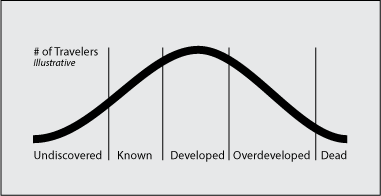
Thanks for sharing this. We lived for two years as Peace Corps Volunteers in Jamaica and really saw some negative impacts of tourism there. The environmental impact of all the resort development on the beaches was one thing. Cultural changes were also apparent in terms of commercialization and westernization. Most resort areas were very generic and retained little authenticity to the Jamaican culture (we found a few exceptions which we share on our blog, for example: http://intentionaltravelers.com/2014/05/28/jamaica-off-the-beaten-path/). Unfortunately, the trickle down economic impact from tourism was minimal because many of the resorts are internationally owned and source their materials from outside the country.
Nice observation! One thing I’d note is what markets are developed toward what tourists. For instance, I’d put Croatia in the “over-developed” section for European and Asian tourists. While it’s relatively undiscovered by Americans, it was packed with Italians, Brits, Germans, and Koreans when we were there in August. Similarly, Cambodia is hard for Westerners to get to, but if you go at the wrong time of year you’ll find it slammed by Chinese tour buses.